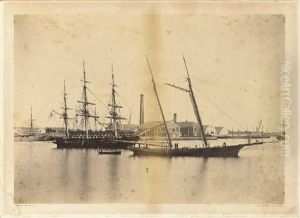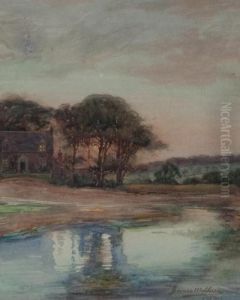James Wallace Black Paintings
James Wallace Black, born on February 10, 1825, in Francestown, New Hampshire, was an American photographer whose work spans the period of the American Civil War and the early development of aerial photography. Notably, he is credited with capturing the earliest surviving aerial photograph in the United States.
Black initially pursued a career in the arts as a painter but transitioned to photography, which was a burgeoning art and science at the time. He became an apprentice to the esteemed daguerreotypist John Adams Whipple, who was a pioneer in the field of astronomical and night photography. Under Whipple's guidance, Black honed his skills and eventually established his own practice.
Black's most famous photograph is 'Boston, as the Eagle and the Wild Goose See It,' taken in 1860 from a hot air balloon piloted by Samuel Archer King. This image is a seminal work in the history of aerial photography and remains an important document of urban America during that period. The photograph shows a bird's-eye view of Boston and is a remarkable technical achievement for its time.
During the American Civil War, Black also contributed to the photographic documentation of the conflict. He photographed the aftermath of the Battle of Antietam, capturing haunting images of the battlefield which serve as some of the earliest examples of photojournalism. These photographs brought the brutal reality of war into public view in a way that had not been possible before.
Black continued to work in photography throughout his life, contributing to various aspects of the medium's development. He was an innovator and an artist who was able to capture the spirit of America during a time of great change and turmoil.
James Wallace Black passed away on January 5, 1896, in Cambridge, Massachusetts. His work remains an important part of the history of photography, offering insight into the artistic and technical evolution of the medium during the 19th century.

